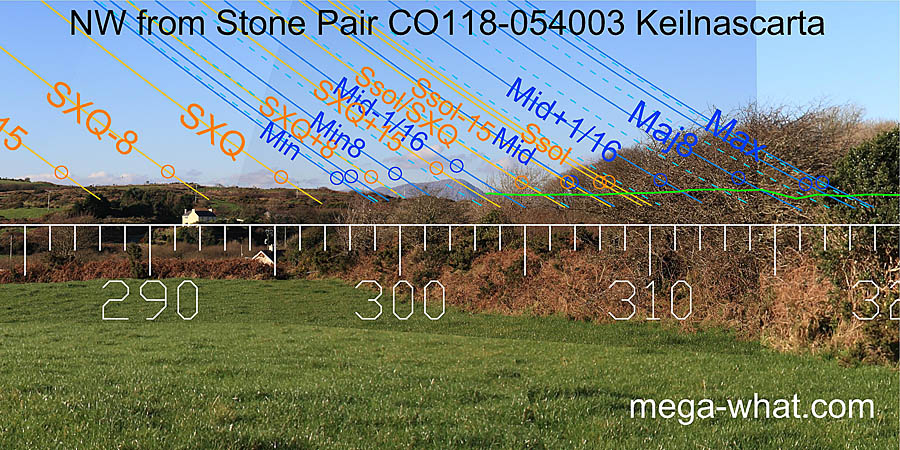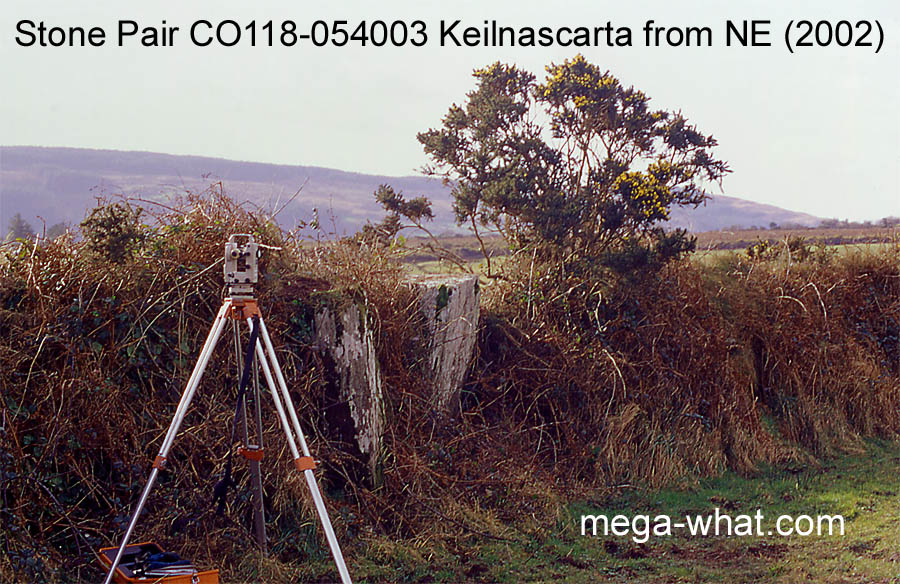 About 3km south of Bantry as the crow flies (5km by road) this equal-height Stone Pair at Keilnascarta is embedded in a field boundary wall near a bungalow.
It is the southmost of a group of three monuments; Stone Row CO118-054002 is 90m to the north and
Stone Pair CO118-054001 is 60m beyond it. Both are on the opposite side of an abandoned railway cutting to this.
About 3km south of Bantry as the crow flies (5km by road) this equal-height Stone Pair at Keilnascarta is embedded in a field boundary wall near a bungalow.
It is the southmost of a group of three monuments; Stone Row CO118-054002 is 90m to the north and
Stone Pair CO118-054001 is 60m beyond it. Both are on the opposite side of an abandoned railway cutting to this.
The south-west stone, twice the thickness of the other, indicates the hilltop at Ballycommane which is a major eighth. The north-east stone, turned more to the south, indicates major standstillLunistice positions vary cyclically over an 18.6 year period but are fairly static for more than a year at either end of the range in the notch between the hill and the ridge. The overall pair axis, more to the north, indicates the intersect of far ridge and the main foreground, which is the lunar sixteenth on the major side of the lunar midpoint.
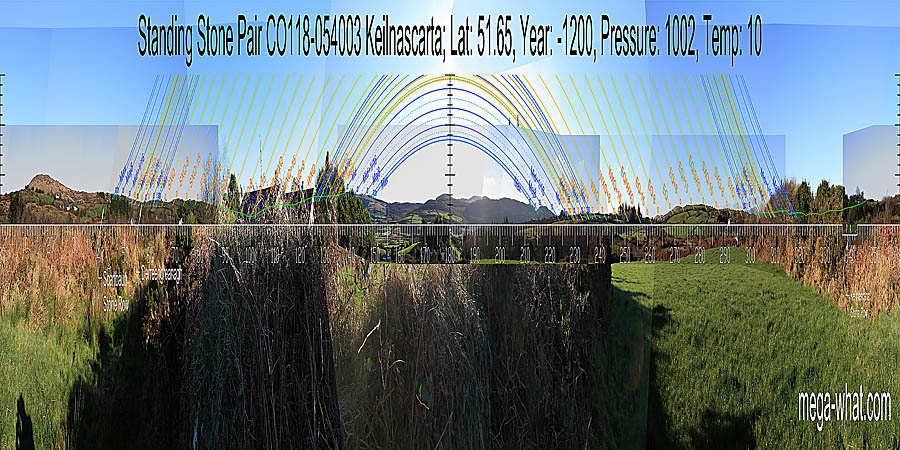 Views are similar to those from the other sites but there are also significant differences.
Views are similar to those from the other sites but there are also significant differences.
From here:
South is close to a hilltop [Pic].
North is on a slope [Pic].
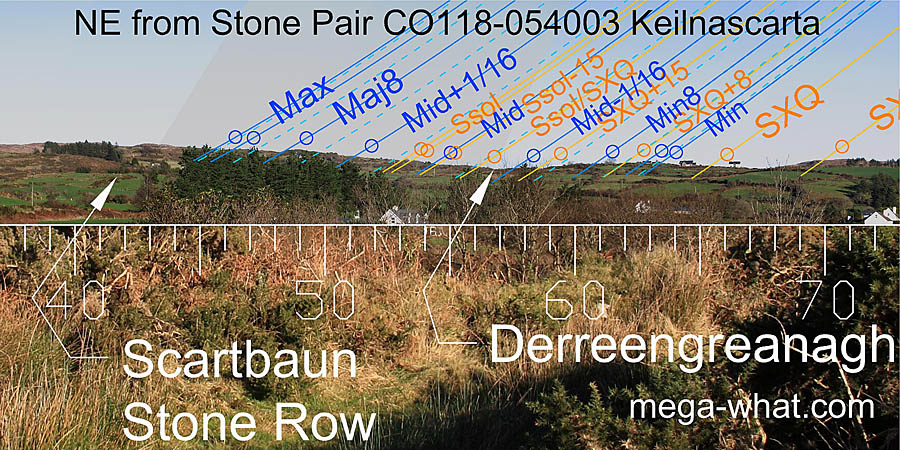 Axial reverse is somewhat north of a saddle at Dereengreanagh, where there is another monument site.
Axial reverse is somewhat north of a saddle at Dereengreanagh, where there is another monument site.
Rising positions from here have moved southwards by about one "division" compared to the nearby stone row. From there the dip was a lunar eighth, from here it is a sixteenth and the minor standstillLunistice positions vary cyclically over an 18.6 year period but are fairly static for more than a year at either end of the range is in the same place as the row's cross-quarter.
 The east is obscured but, as the eye shifts southward, views would gradually become more similar to those from the stone row.
The east is obscured but, as the eye shifts southward, views would gradually become more similar to those from the stone row.
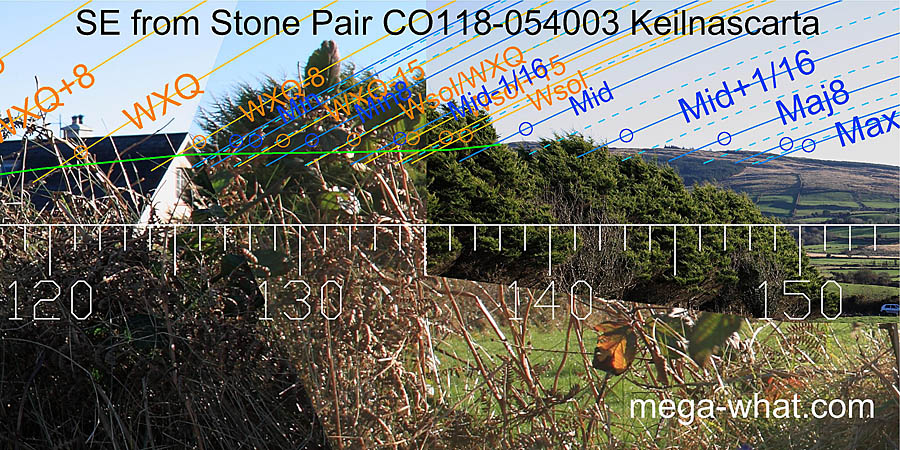 The south-eastern view is almost identical to that from the row as movement towards the pair is towards this skyline.
The south-eastern view is almost identical to that from the row as movement towards the pair is towards this skyline.
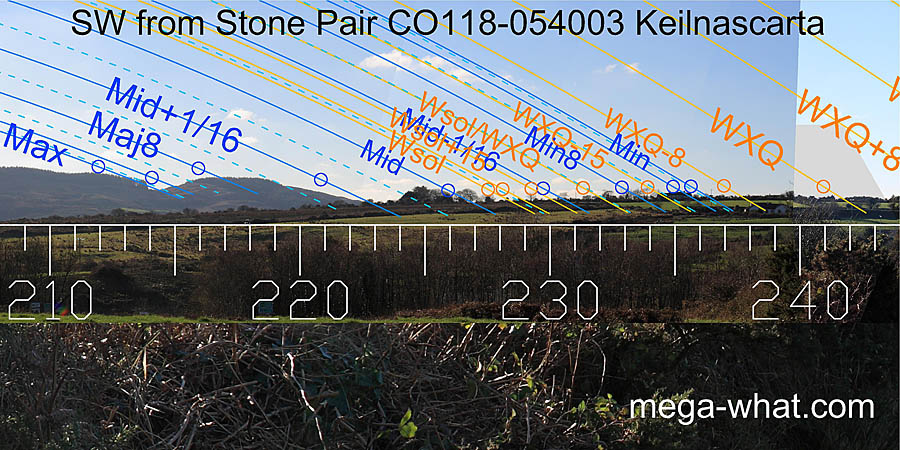 The south-west is slightly more precise from here than from the row.
The south-west is slightly more precise from here than from the row.
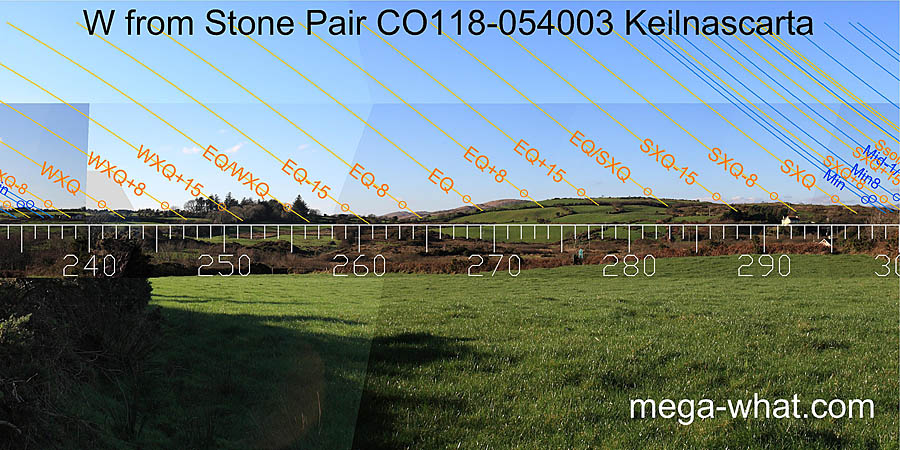 Westwards, there is again a southerly shift and less of the horizon is obscured by trees.
Westwards, there is again a southerly shift and less of the horizon is obscured by trees.
- Keilnascarta Stone Row is c.90m north.
- Keilnascarta's other Stone Pair is c.60m beyond it.
- Parkana Stone Pair is c.900m to the south-south-east.
- Maulinward Stone Row is 1.4km to the south.
- Scartbaun Stone Row is 1.2km to the north-east.
References
- Archaeological Survey of Ireland, record details. www.archaeology.ie/archaeological-survey-ireland
- Ó'NUALLÁIN, SEÁN 1988 Stone Rows in the South of Ireland. Proceedings of the Royal Irish Academy 88c:179-256, p247, no. 128.
- POWER, D. et al. 1992 Archaeological Inventory of County Cork, Volume 1: West Cork. Dublin: Stationary Office. p36, no.191.

